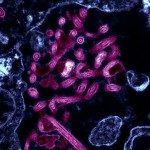Link to Pubmed [PMID] – 12385857
Maturitas 2002 Oct;43(2):95-104
OBJECTIVES: To describe trends in prevalence and determinants of hormone replacement therapy (HRT) in German women.
METHODS: Three representative samples of women in Augsburg, Germany were examined in the MONICA surveys in 1984/85 (45-64 years; N=1013), 1989/90 and 1994/95 (both 45-74 years; N=1496 and 1475) by interview and anthropometry, and all drugs taken during the previous week were documented. The prevalence of HRT use was calculated by survey, age group and HRT type, and various characteristics were evaluated as determinants for any systemic HRT use by logistic regression.
RESULTS: The prevalence of HRT use in women aged 45-64 years in 1984/85, 1989/90 and 1994/95 was 3, 9% (age 45-74, 6%) and 23% (17%), respectively. In 1994/1995, positive determinants of HRT use were daily consumption of salad and vegetables, having quit smoking (vs. current smoking), regular exercise, ever having taken oral contraceptives, body mass index <25 kg/m(2) and age, and negative determinants were not drinking alcohol and education for <9 years (all P-value or=5 times during the previous year, and were less likely not to have seen a general practitioner or gynaecologist (all P-values <0.001).
CONCLUSION: HRT use increased substantially in Germany between 1984 and 1995. Women with characteristics associated with lower morbidity and mortality were more likely to use HRT, which agrees with the healthy-user phenomenon described in other countries.

